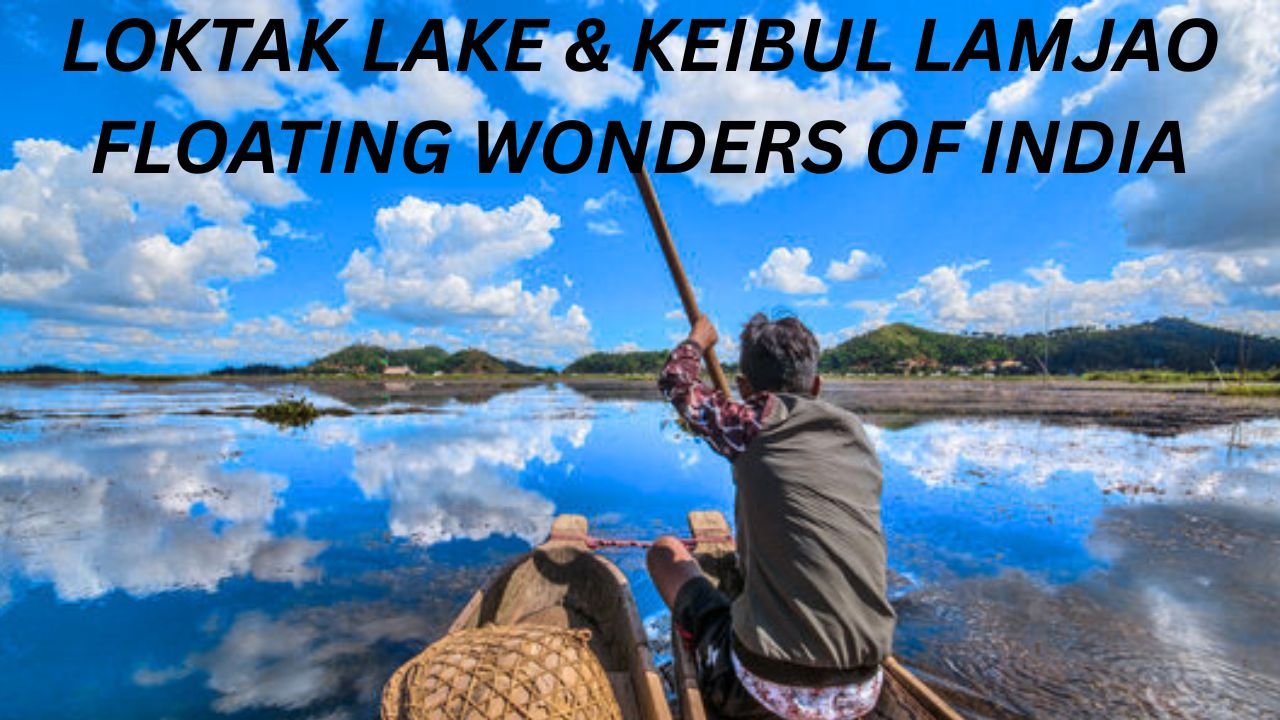Blog
Loktak Lake & Keibul Lamjao, Manipur: India’s Floating Paradise

Nestled in the scenic state of Manipur, Loktak Lake is the largest freshwater lake in Northeast India, famous for its floating islands called phumdis. Moreover, adjacent to the lake, Keibul Lamjao National Park stands as the world’s only floating national park, home to the endangered Sangai deer, often called the “dancing deer” of India. Together, these natural wonders offer breathtaking scenery, rich biodiversity, and cultural significance. Therefore, the region has become a must-visit destination for travelers, nature lovers, and wildlife enthusiasts.
Loktak Lake: The Floating Marvel
Spanning over 285 square kilometers, Loktak Lake supports fisheries, irrigation, and tourism. Notably, its most fascinating feature is the phumdis, thick floating mats of vegetation that drift across the water. Consequently, these phumdis sustain local life, including floating farms and fishing activities, thereby creating a unique ecosystem found nowhere else in India.
The lake hosts diverse fish species, migratory birds, and aquatic plants, which in turn attract ecotourists and photographers. Furthermore, boating across the lake provides a magical experience, especially during sunrise or sunset. Thus, visitors can enjoy reflections of floating islands and the surrounding hills, making it an unforgettable sight.
Keibul Lamjao National Park: World’s Only Floating Wildlife Sanctuary
Keibul Lamjao, located on the southern part of Loktak Lake, remains the only floating national park in the world. Additionally, the park’s phumdis rise and fall with water levels, forming a delicate, floating ecosystem. Importantly, this park serves as the primary habitat of the endangered Sangai deer, whose graceful movements across the floating islands have earned it the nickname “dancing deer.”
Visitors can enjoy guided wildlife tours, spotting Sangai deer, migratory birds, otters, and other aquatic animals. Moreover, photography enthusiasts find unique opportunities to capture rare wildlife in this floating wetland setting. Therefore, the park appeals to both nature lovers and professional photographers.
Cultural and Environmental Significance
Loktak Lake holds immense cultural importance for the local Meitei communities, who depend on the lake for fishing, farming, and religious practices. Furthermore, festivals and rituals connected to the lake highlight the harmonious relationship between nature and human life in Manipur.
Environmentally, the lake and Keibul Lamjao National Park play a critical role in biodiversity conservation, water regulation, and sustaining regional climate balance. Consequently, ongoing conservation efforts aim to protect the lake from pollution, invasive species, and climate threats. In addition, these initiatives promote sustainability for future generations.
Conclusion
Loktak Lake and Keibul Lamjao National Park offer a rare combination of natural beauty, wildlife, and cultural richness. Therefore, whether you are a traveler, photographer, or nature enthusiast, these floating wonders should definitely be on your Manipur itinerary. Ultimately, visiting them provides both spiritual fulfillment and a unique nature experience..
